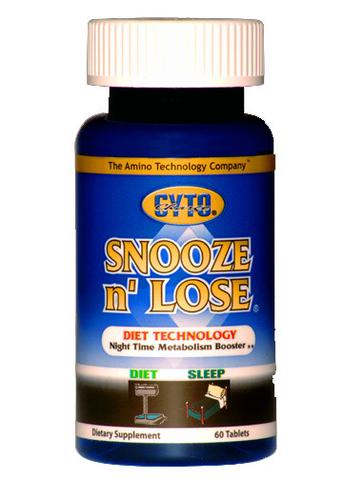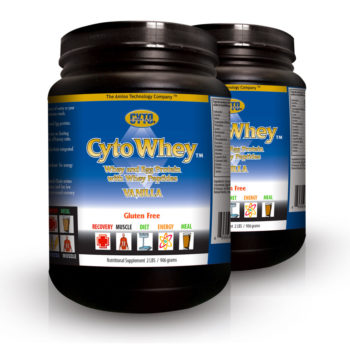It is likely that “How can I build muscle, lose fat, and boost my performance?” is the most common question in the fitness world. This question has generated hundreds of magazine titles, thousands of Internet pages and billions of dollars to the manufacturers of such products. A great many, too many, risk their health to obtain that fit, lean look they crave. They succumb to what many professionals have labeled as “bogus body busters.”
From the want-to-be athlete to the common fitness buff to the professional athlete, many find it difficult to resist the seductive messages that promise leaner bodies, bigger muscles and better stamina from the contents of a bottle or pill. Look at any fitness magazine and you’ll see what I mean.
Sales of some supplements received a huge boost beginning years back in 1998 when reporters revealed that baseball player Mark McGwire used the controversial muscle-building substances androstenedione and creatine during his successful bid to break Roger Maris home run record. Despite the outcome, that boost has stayed.
For those craving the miracle cure for large muscles and a lean body, McGwire’s powerful swing and bulging biceps were proof that performance-enhancing substances work. According to the Nutrition Business Journal that provides market research for the dietary supplement industry, U.S. sales of pills, powders, bars and beverages promoted to boost athletic performance reached $1.26 billion in 1997 to $26.4 billion in 2015 in the U.S. and is expected to reach $278 billion globally by 2024.
Advertisement: CytoCharge (click on photo for more info)

Was it practice or pills?
McGwire’s swing had more to do with his finely honed eye-hand coordination than popping a pill or a super-drink, according to Edward R. Laskowski, M.D., co-director of the Sports Medicine Center at Mayo Clinic, Rochester, Minn. As in many sports, finesse counts for more than sheer strength. After all, you don’t see many hard-core bodybuilders in speed sports. The simple reason is that the training for one is not conducive to competitive skills in the other. So, strength is not all its cracked up to be in some areas.
The danger is that young athletes and others emulated McGwire and began to use substances of questionable value in a bid to gain a competitive edge or to feel better about themselves; almost 20 years later that trend has not only continued, but has grown. However, this has always been a common problem in sports of all kinds. The athlete is always looking for an edge.
Rather than relying on a pill, we would stress the development of strength, skill, and athletic performance. Lets look at two of the most common supplements in use today.
For a little history, Androstenedione was developed by East German researchers who began using it in the 1970s in an attempt to boost the performance of Olympic swimmers and other athletes. Andro was introduced commercially in the United States in the mid-1990s. Marketers widely claim that a 100-milligram dose of androstenedione increases the male hormone testosterone by up to 300 percent. The increase, according to marketers, lasts for about 3 hours. Androstenedione is a precursor hormone in the production of testosterone. Most of the testosterone in men is produced by the testes; it is responsible for facial hair, a lower voice, bigger muscles and other male characteristics.
Testosterone also is produced in both men and women by the glands located atop each kidney called the adrenal glands. The adrenals, like the testicles, are part of the endocrine system, which secrete hormones directly into the bloodstream. Testosterone and other hormones are governed by a feedback system in the body that stimulates the production of a specific hormone when levels fall too low. The same system reduces production when optimal levels are reached. Proponents vehemently argue that the body directly converts andro to testosterone.
Advertisement: CytoCharge (click on photo for more info)

An elevated level of the male hormone allows athletes to train harder and recover more quickly. Quite simply, there is very little documented research to back claims made by these people. However, androstenedione is naturally found in meat and some plants. Consequently, the pills and capsules on the market deliver it in a concentrated form that may carry unwanted consequences. As an example, labels of many andro products warn that it should not be used by women, anyone under 18 years old, or people suffering from various medical conditions, including diabetes, heart disease, psychological disorders and prostate hypertrophy.
The Association of Professional Team Physicians, composed of team doctors from professional sports teams, recommended that androstenedione be banned from all competitive sports. And, so it was; it was banned in 2005 by listing it as a schedule III controlled substance (it was labeled as an anabolic steroid). According to the group, andro has a chemical structure like that of an anabolic steroid a usually synthetic drug that functions like testosterone. The governing bodies of virtually all competitive sports ban anabolic steroids. The ban supported this, but still, some athletes use it, which is at their own risk.
The experience of these professionals has raised concerns about serious health risks and an “unfair advantage” in competition – a hot topic that has virtually plagued sports since almost the first Olympic games. Medical professionals also warn of potential complications such as acne, breast enlargement, liver and heart problems, and personality disorders resulting from andro use.
The question must be asked, “are the potential benefits worth the ensuing health risk?” Let’s look at some common supplements.
Creatine monohydrate is a compound produced by the body that helps release energy in muscles. Creatine is the most studied of all of the nutritional supplements, and the only one to have scientific research support some of its claims. Unlike androstenedione, scientific research indicates that creatine can boost short-term bursts of power. It is still in wide use today.
“Most of the research points to improvements in short term power activities like improving maximum-weight bench press or increasing speed during cycling sprints of very short duration,” says Dr. Laskowski. Other studies have shown an increase in lean muscle mass with creatine. The result of all this is the hype of creatine producing steroid-like effects without the side effects.
Creatine helps muscles make and circulate more adenosine triphosphate (ATP), the fuel the body uses for quick, explosive activity of short duration like weightlifting or sprinting. Creatine also reduces energy waste products. As a result, it’s purported to enhance performance and decrease fatigue.
A normal liver makes about 2 grams of creatine each day. However, creatine also is readily available from meat in your diet. Creatine levels are relatively easily maintained, and muscles can store creatine. The kidneys remove excess levels of the substance, which casts some doubt on whether creatine supplements are of any value to someone who already has a high muscle creatine content.
There also are serious questions concerning long-term use of creatine.
A primary concern is that when such supplements are used, the body will sometimes cease production of that product due to artificially high concentrations. Whether the kidneys can process that much creatine for a number of years is a prime worry, especially in young athletes. The amount of creatine that people take also varies significantly with many having the attitude that, “if a little is good more is better.” And, creatine occurs naturally in foods thus, no one knows what a supplemental dose will do over a long period of time, regardless of age.
In addition, creatine tends to draw water away from the body into muscle cells, which can lead to serious dehydration. Those using creatine should make sure they drink plenty of water or other fluids. A few years ago, 3 wrestlers died of dehydration-related kidney complications. While not directly linked with creatine use, all of the wrestlers were taking the product. On a lesser scale, there are many anecdotal reports of increased muscle cramping while taking creatine.
One of the main problems with these and other supplements is that they are not FDA regulated and thus, purity is not guaranteed. As a result, harmful binding and other filler agents may be present that can be a long- or short-term health risk, especially for those with medical conditions. This is even more likely if you get such a product manufactured in China where safety protocols are lax to say the least.
Despite the testimonials to muscle size and strength, there is no evidence that andro, creatine, or any other substance enhances athletic performances over what could be attained by persistent practice, sport-specific training, and proper nutrition. This would require considerable research expense and time. The link could be there, but there is no way to say this for certain.
Driving a gold ball for 330 yards certainly requires a lot more than being able to lift 20 extra pounds one more time. There’s speed, agility, reflexes, and technique. In the opinion of many professionals, no amount of drug or other supplement can substitute for these skills. As an example observe Tiger Woods; during his early years he was not the strongest or largest golfer on tour, but he had one of the longest drives and a near perfect short game. In other words he could drive and putt, while many golfers are stronger at one than the other. And, there’s one small other thing Tiger had in his hey day, a skill and athletic ability that surpasses those who are stronger and larger. The same is true of athletes in other sports today. Consequently, there’s absolutely no data that any performance-enhancing substances can improve hard earned skills.
As a word of caution, if you are using these type supplements, you should at least cycle completely off of them once every 12 weeks for at least 2 weeks of abstinence.






